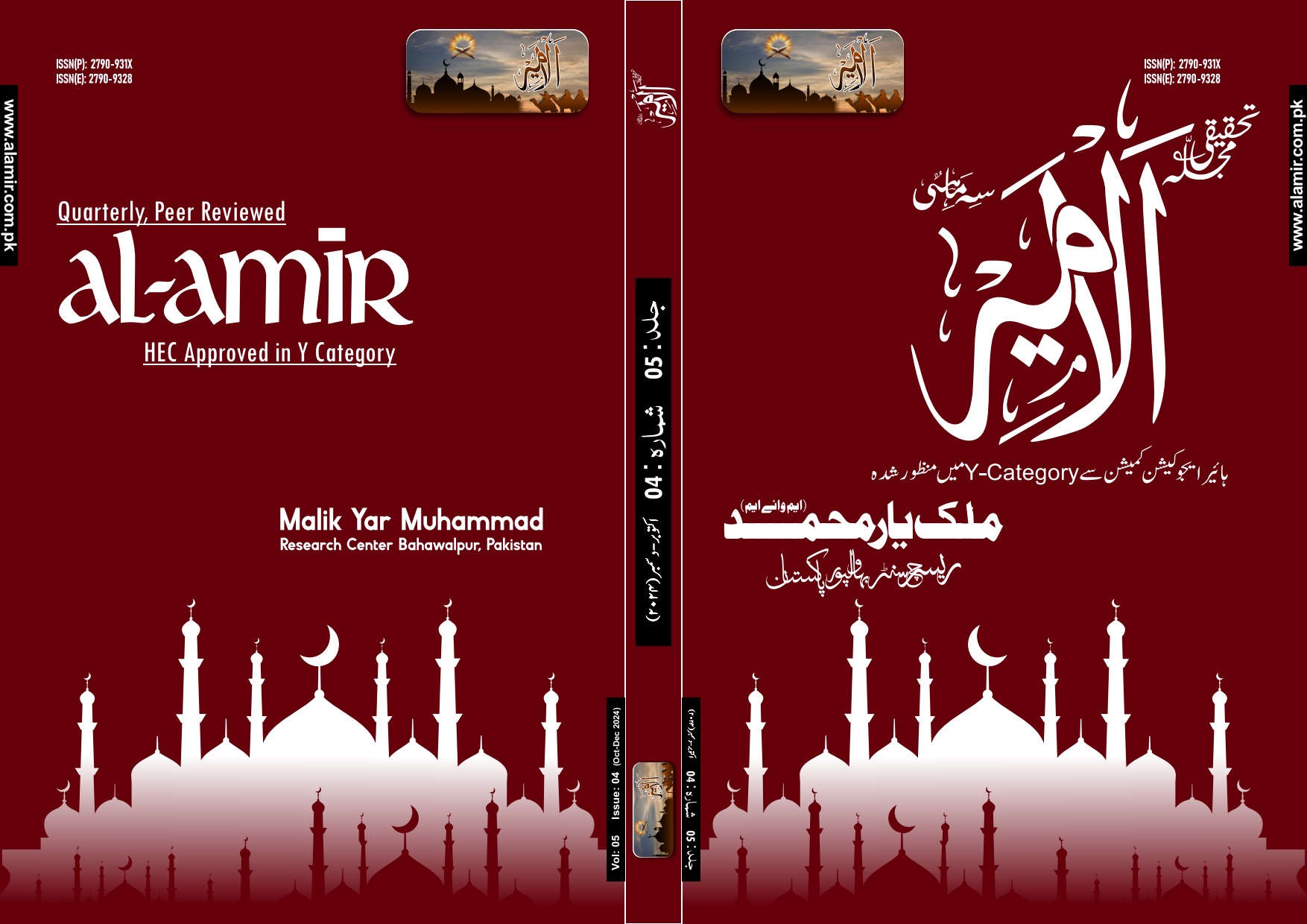ہمزہ محققہ اور ہمزہ مخففہ سے متعلق قواعدِ ضبط؛ایک تحقیقی جائزہ
Rules of Orthographic Notation Concerning "Hamzah Muhaqqaqah" & "Hamzah Mukhaffafah"; A Research View
Abstract
In the orthographic system of the Qur'an (Qur'anic Dabt), the rules related to the letter Hamzah are among the most intricate and complex topics. These rules have long puzzled even the most accomplished scholars and specialists in the field. Linguistically, Hamzah implies intensity, pressure, and criticism. Fundamentally, there are two types of Hamzah: Hamzah Muḥaqqaqah (the realized Hamzah) and Hamzah Mukhaffafah (the lightened Hamzah).
Hamzah Muḥaqqaqah is always retained in both writing and pronunciation, making it a heavy and difficult sound to articulate. Due to its phonetic heaviness, the Arabs—particularly the people of Hijaz and the Quraysh—sought various ways to lighten its pronunciation. As a result, several methods of Hamzah simplification (known as takhfīf) emerged, especially from the Hijazi tradition. The main techniques used for lightening the Hamzah are: Ibdāl (substitution), Tashīl Bayn Bayn (softening to a sound between two letters), Ḥadhf (omission), and Naql al-Ḥarakah (transfer of the vowel).
This study briefly explores the classifications and phonetic treatments of Hamzah within the context of Qur'anic recitation and writing, offering clarity on a subject that has historically been challenging for scholars of Tajwīd and Qirā’āt.
Keywords: Dabt, Hamzah, Hamzah Muḥaqqaqah, Hamzah Mukhaffafah, Ibdāl, Tashīl Bayn Bayn, Ḥadhf, Naql al-Ḥarf
Views & Downloads Stats:
Downloads
Published
How to Cite
Issue
Section
License
Copyright (c) 2024 Sara Bano, Hafiz Muhammad Abdullah

This work is licensed under a Creative Commons Attribution-ShareAlike 4.0 International License.








